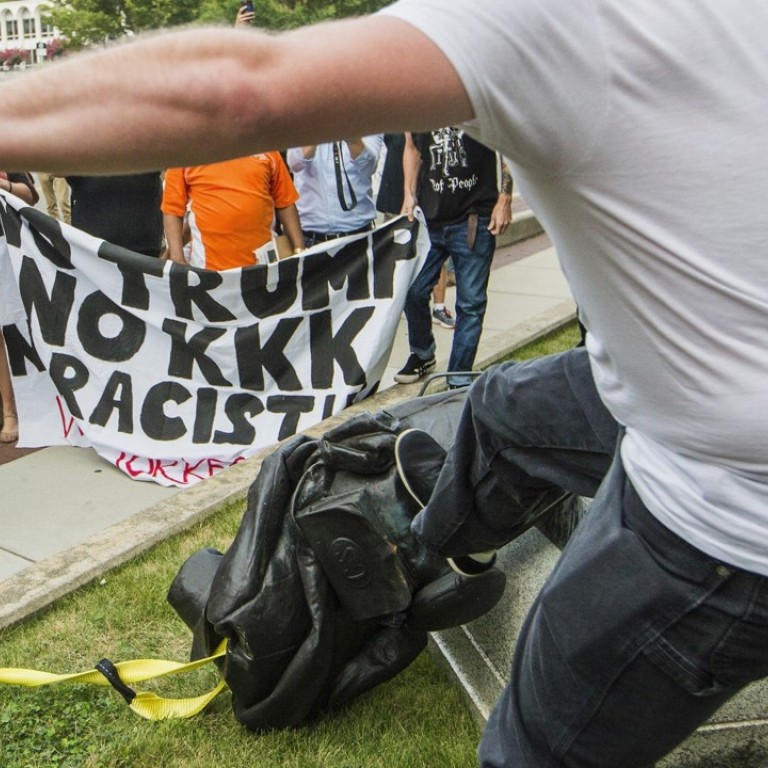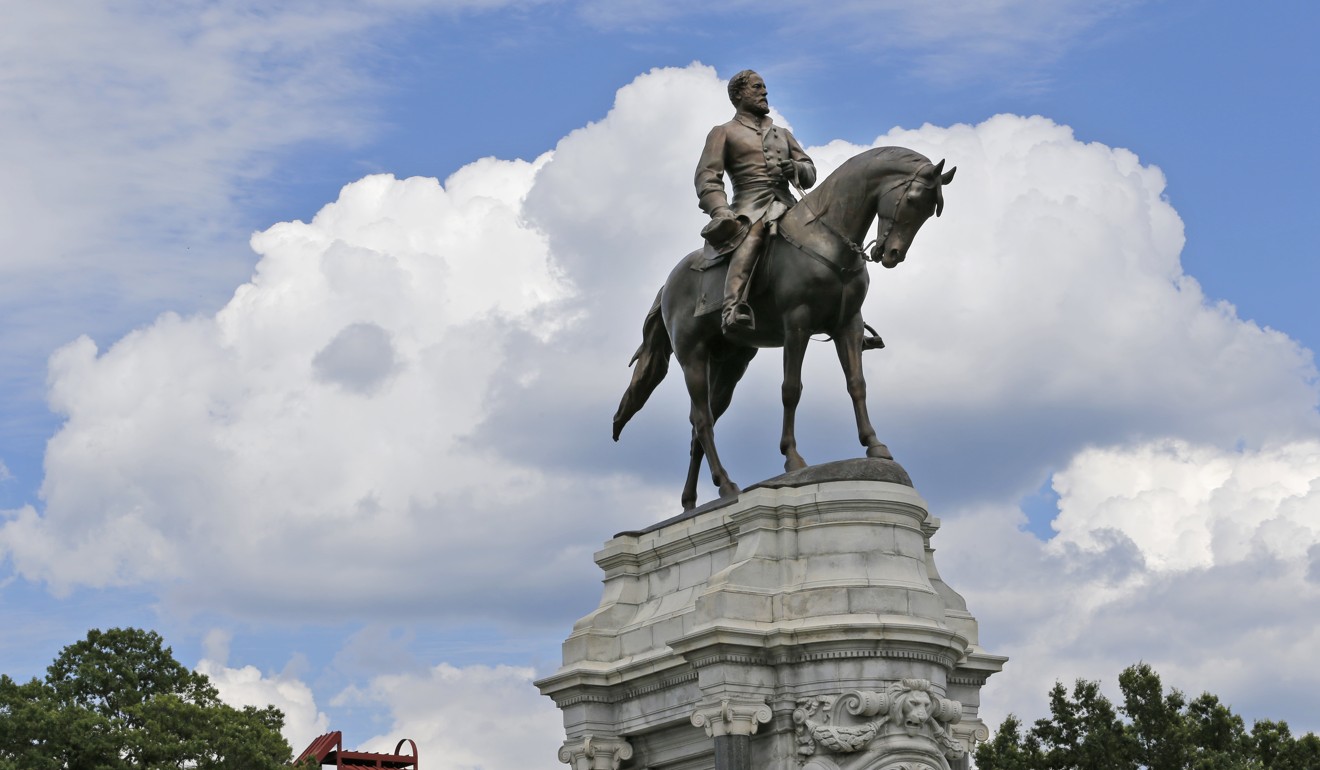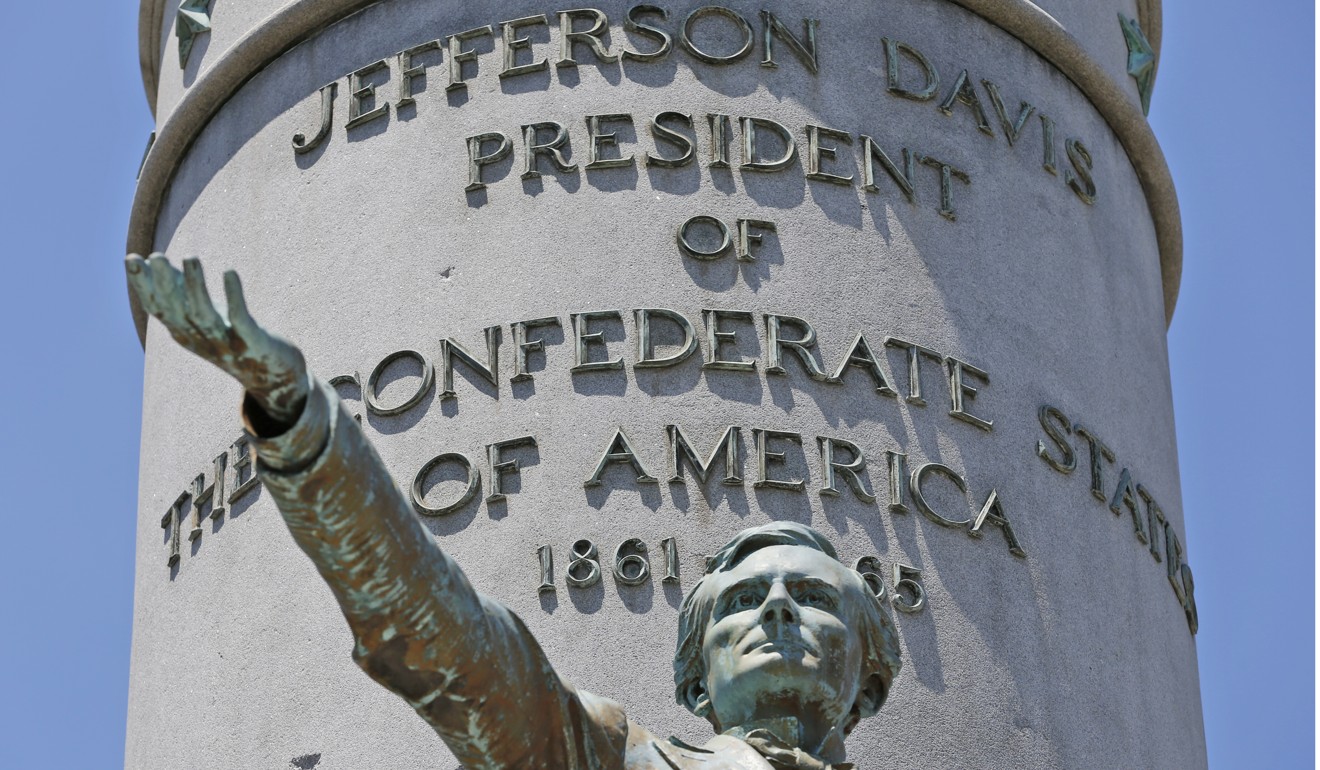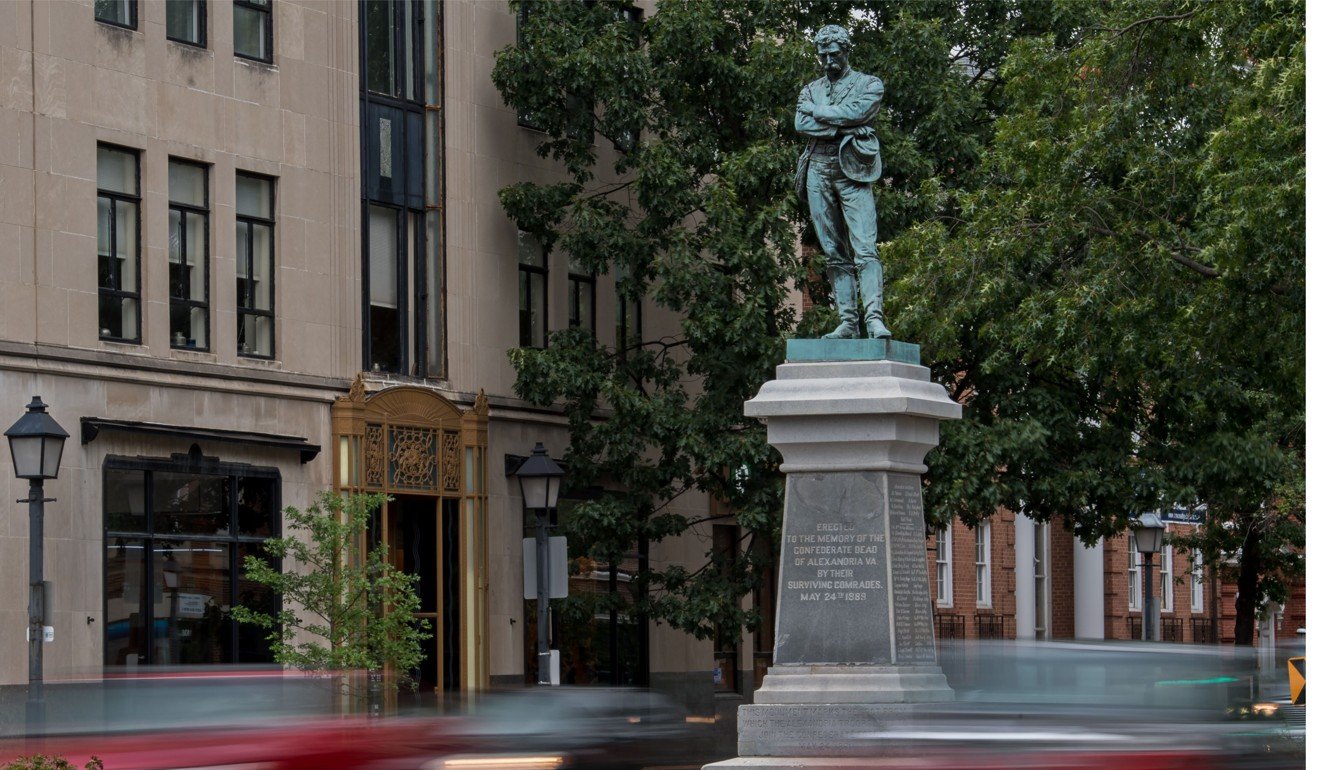
Monumental divide: pressure builds in US to remove Confederate statues
He stands in the middle of the street, his back to the nation’s capital, his gaze southwards towards the battlefields of the Civil War where his comrades fell.
Erected nearly 130 years ago, the bronze statue of an unarmed Confederate soldier sits at a busy intersection in Alexandria, Virginia, just across the Potomac River from Washington.
The statue, named “Appomattox” for the site of the rebel surrender in 1865 after a devastating four-year conflict, is one of hundreds of similar monuments across the American South honouring the Confederate dead.
Debate over what to do with these controversial symbols of the pro-slavery Confederacy has been simmering for years and is intensifying after boiling over into bloodshed at the weekend.


A woman was killed and 19 other people injured when a man suspected of being a white nationalist drove his car into a crowd of counter-protesters.
Efforts to remove the Charlottesville and Alexandria statues are tied up in the courts and state legislature, but other Confederate monuments and symbols have been coming down as the United States confronts its complicated racial legacy.
Demonstrators in the North Carolina city of Durham took matters into their own hands on Monday and pulled down a statue of a Confederate soldier that had been erected outside the old county courthouse in 1924.
In Gainesville, Florida, a Confederate statue known as “Old Joe” that had been standing outside a county building since 1904 was taken down Monday and carted away to a private cemetery.

In many cases, preserving history was not the true goal of these displays. Rather, many of them were part of an effort to glorify a cause that was manifestly unjust
“The Civil War was a dark and tragic time in our nation’s history and yes, we need to remember it,” Mayor Jim Gray said. “But we also need to explain it accurately and truthfully.
“Lexington was one of America’s largest slave markets,” Gray said.
“It’s just not right that we would continue to honour these Confederate men who fought to preserve slavery on the same ground where men, women and even children were sold into a life of slavery.”
In Nashville, Tennessee, dozens of activists staged a protest at the state capitol on Monday to demand the removal of a bust on display there of Nathan Bedford Forrest, a Confederate general and founder of the Ku Klux Klan.
In a report published in April 2016, the Southern Poverty Law Centre (SPLC) - a civil rights advocacy group - found that more than 1,500 symbols of the Confederacy are located on US public lands, mostly in the South.

Defenders of preserving the Confederate symbols argue that they serve as a reminder of a proud Southern heritage, and that removing them is effectively a way of erasing history.
According to historians and the SPLC report, however, most Confederate monuments were erected during the Jim Crow era of racial segregation and in response to the civil rights movement.
“In many cases, preserving history was not the true goal of these displays,” SPLC president Richard Cohen said in a statement accompanying the report.
“Rather, many of them were part of an effort to glorify a cause that was manifestly unjust,” Cohen said.
“Other displays were intended as acts of defiance by white supremacists opposed to equality for African Americans.
“The argument that these tributes represent Southern ‘heritage’ ignores the heritage of African Americans whose ancestors were enslaved by the millions and later subjected to decades of oppression,” Cohen said.
The Charlottesville violence has given new life to a campaign to remove Confederate symbols, which first gained momentum following the June 2015 murders in South Carolina of nine black church-goers by an avowed white supremacist.
The divisive Confederate battle flag was taken down from outside the state’s legislature following the massacre and Confederate flags also came down in Alabama, another bastion of the self-proclaimed Civil War-era republic.
One of the most notable recent removals of Confederate symbols was in New Orleans, where statues of Lee, Confederate president Jefferson Davis, and another general, P.G.T. Beauregard, came down under heavy security.
New Orleans Mayor Mitch Landrieu, speaking in May when the last of the statues was pulled down, said they are “not just innocent remembrances of a benign history.
“The Confederacy was on the wrong side of history and humanity,” Landrieu said. “It sought to tear apart our nation and subjugate our fellow Americans to slavery.
“This is the history we should never forget and one that we should never again put on a pedestal to be revered.”

